
Browse an alphabetical list of photographs. These historical images portray people, places, and events before, during, and after World War II and the Holocaust.
<< Previous | Displaying results 1126-1150 of 2641 for "Photo" | Next >>
Young Jewish men and women pose for a photograph in the Piotrkow Trybunalski ghetto. Poland, 1940. Pictured from left to right are: Abram Zarnowiecki, Rozia Zarnowiecki, Mania Freiberger, Moniek, Rachel Zarnowiecki, and Chaim Zarnowiecki. All those pictured died in the Holocaust.
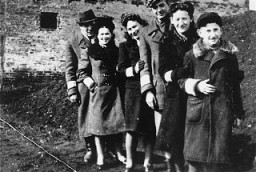
Group portrait of students at the Beis Yaakov religious school for girls dressed in costumes to celebrate the holiday of Purim. Kolbuszowa, Poland, March 1938.
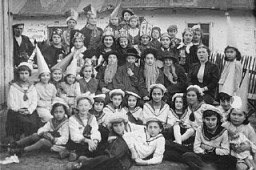
Hilda Rattner (born Hilda Wiener ) was born into a Jewish family in Vienna on June 14, 1904. Not long after her birth, Hilda’s parents realized that she was deaf. Two years later, their fourth child, Richard, was born, and he was also deaf. Vienna in particular had a very vibrant deaf community where Jews and non-Jews mixed freely. Hilda and her brother Richard attended a Jewish school, where they learned to sign, and it was through these associations and activities that Hilda met Isadore Rattner, a…
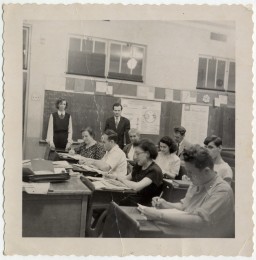
Group portrait of women and children standing outside in Warsaw before the war. Warsaw, Poland, ca. 1938.
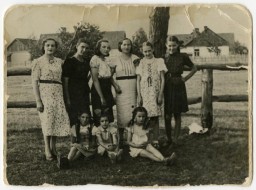
SS guards and Lithuanian collaborators force Jewish men into the Ponary forest, a site for mass killings outside of Vilna. German-occupied Lithuania, 1941.
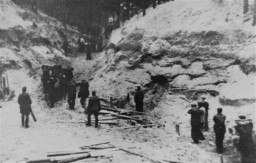
View of a guard tower and fence at the Buchenwald concentration camp. Germany, wartime.

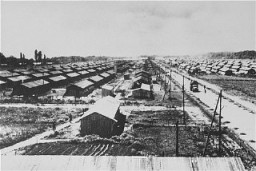
Gustav Schroeder, captain of the St. Louis, on the day of the ship's departure from Hamburg. Neither Cuba nor the US granted refuge to the ship's passengers. Germany, May 13, 1939.
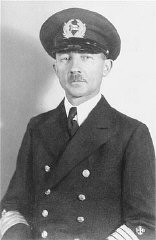
"Gypsy camp" area in the Lodz ghetto. Roma (Gypsies) were confined in a segregated block of buildings. Poland, 1941–44.
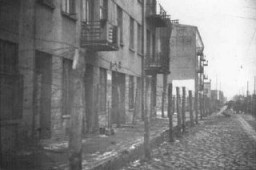
Smoke rising from the chimney at Hadamar, one of six facilities which carried out the Nazis' Euthanasia Program. Hadamar, Germany, probably 1941. [Dioezesanarchiv Limburg (DAL), Papers of Father Hans Becker]
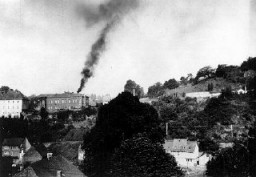
Haika Grosman, one of the organizers of the Bialystok ghetto underground and participant in the Bialystok ghetto revolt. Poland, 1945.

Hair of women prisoners, prepared for shipment to Germany, found at the liberation of Auschwitz. Poland, 1945.
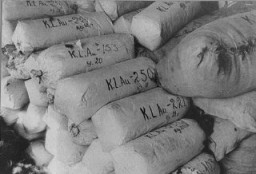
During World War II, the Nazi regime financed and facilitated anti-British and antisemitic broadcasts by the former Mufti of Jerusalem, Hajj Amin al-Husayni, an Arab nationalist and prominent Muslim religious leader, to mobilize support for Germany and the Axis among Muslims in the Balkans and the Middle East. At the close of the war, al-Husayni was arrested in the French occupation zone of Germany. After authorities moved him to France, al-Husayni fled to Egypt, where he continued to produce and…
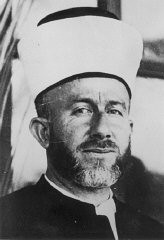
The former Mufti of Jerusalem, Hajj Amin al-Husayni, meets Hitler for the first time. Berlin, Germany, November 28, 1941.
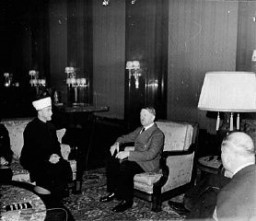
Hajj Amin al-Husayni in the company of German SS and Bosnian members of the Waffen-SS during an official visit to Bosnia, ca. 1943.
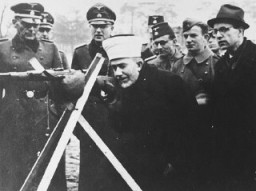
Halina Bryks was photographed in the Kloster Indersdorf children's center in an attempt to help locate surviving relatives. Photographs such as this one showing children holding name cards were published in newspapers to facilitate the reunification of families. Germany, after May 1945.
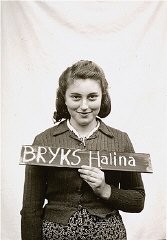
Visitors in the Hall of Witness at the United States Holocaust Memorial Museum. Washington, DC, 1998.

The public hanging of three members of the Communist underground on Karl Marx Street in Minsk. One of the victims wears a large placard around his neck that reads "We are partisans and have shot at German soldiers."This execution was one of four carried out in Minsk on October 26, 1941, by German troops with the 707th Infantry Division. Altogether, 12 members of the Communist underground were publicly hanged in four groups of three near a yeast-making factory. This is believed to be the first public…
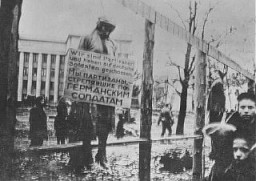
Members of the Lvov Jewish council are hanged by the Germans. Lvov, Poland, September 1942.
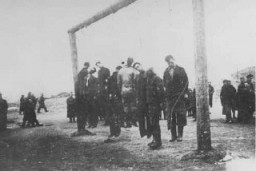
Jewish parachutist Hannah Szenes at Kibbutz Sedot Yam, a communal agricultural settlement. Palestine, 1941.
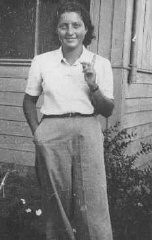
Hannah Szenes on her first day in Palestine. Haifa, Palestine, September 19, 1939. Between 1943 and 1945, a group of Jewish men and women from Palestine who had volunteered to join the British army parachuted into German-occupied Europe. Their mission was to organize resistance to the Germans and aid in the rescue of Allied personnel. Hannah Szenes was among these volunteers. Szenes was captured in German-occupied Hungary and executed in Budapest on November 7, 1944, at the age of 23.
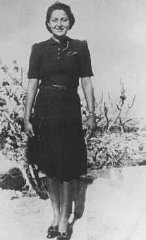
Jewish parachutist Hannah Szenes at Kibbutz Sedot Yam, a communal agricultural settlement. Palestine, 1942.
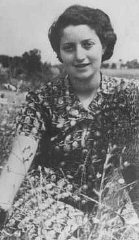
Hannah Szenes, in the garden of her Budapest home before she moved to Palestine and became a parachutist for rescue missions. Budapest, Hungary, before 1939.
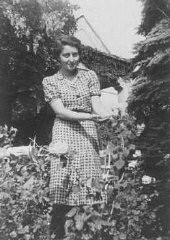
Defendant Hans Fritzsche enters the Nuremberg courtroom under American guard during the International Military Tribunal.
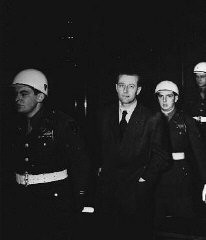
A Hanukkah party for Jewish children at the Fuerth displaced persons camp. Gifts were contributed by families of Americans stationed at the Nuremberg military post. Germany, December 9, 1947.
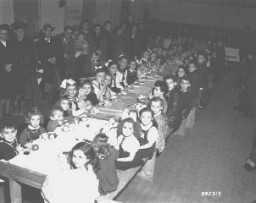
We would like to thank Crown Family Philanthropies, Abe and Ida Cooper Foundation, the Claims Conference, EVZ, and BMF for supporting the ongoing work to create content and resources for the Holocaust Encyclopedia. View the list of donor acknowledgement.